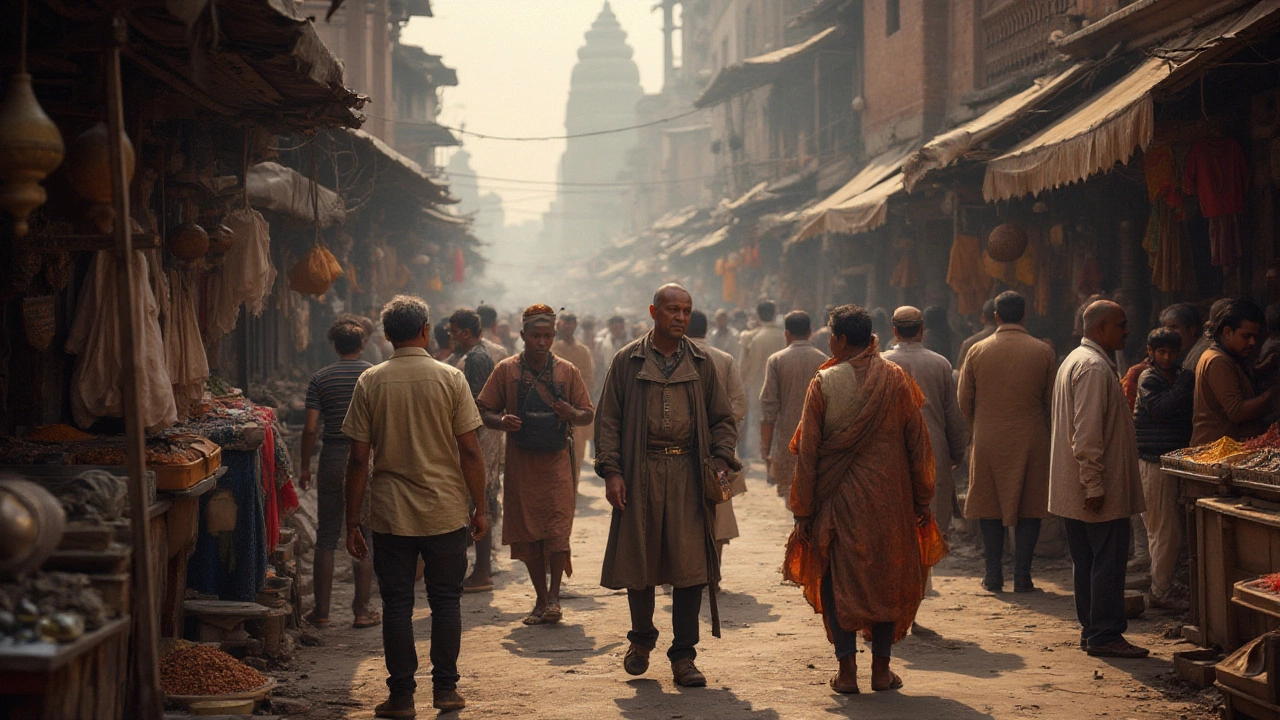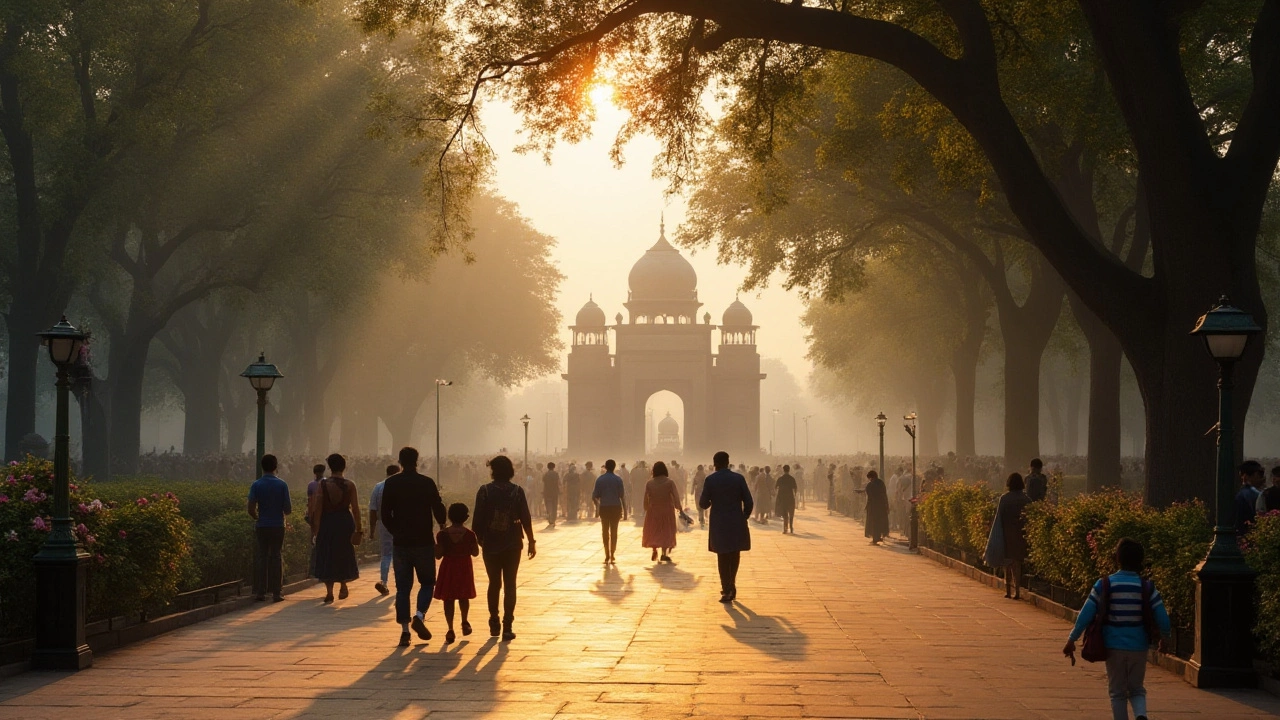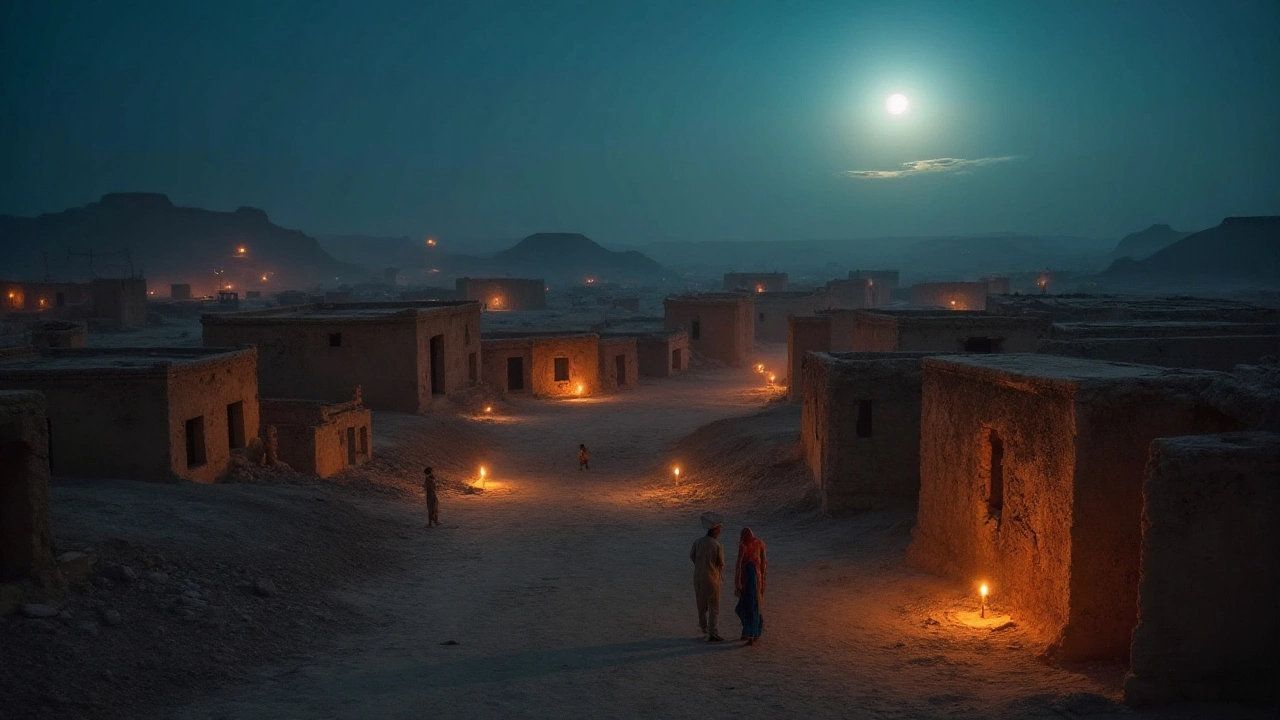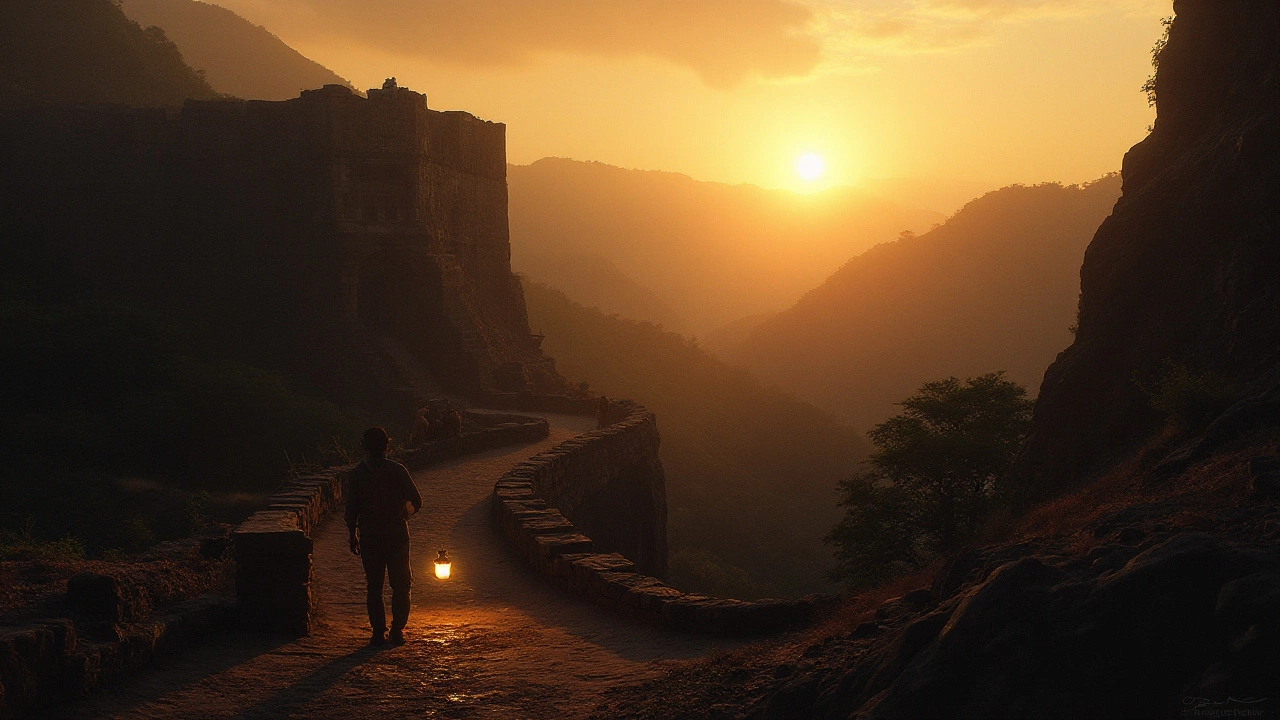Dark tourism is a unique and thought-provoking way to explore the world, offering insights into how past tragedies shape our present. Rather than shying away from the more somber chapters of history, some travelers seek to understand these moments by visiting places where they unfolded. In India, a land steeped in history and culture, dark tourism has captivated a curious crowd eager to learn about historical events that are as fascinating as they are chilling.
In this article, we explore why India stands out as a prominent dark tourism destination. From the ghostly landscapes of Bhangarh Fort to the tragic stories of the Jallianwala Bagh massacre, each site provides a chance to reflect, learn, and perhaps find a new perspective on history's enduring shadows. Whether you're a history buff or merely curious about the macabre, India offers a rich tapestry of dark tourism experiences waiting to be uncovered.
- Introduction to Dark Tourism
- Famous Dark Tourism Sites in India
- Cultural Significance
- Tips for Dark Tourism Enthusiasts
Introduction to Dark Tourism
Dark tourism, a concept rapidly gaining popularity, invites travelers to delve into history from a unique perspective. Unlike the usual sun-soaked beaches or bustling city tours, this genre of tourism is all about embracing the stories of tragedy, resilience, and sometimes, the supernatural. It's a journey into the past where tales of human survival, suffering, and strength come to the fore. One might wonder why anyone would seek out places associated with death and despair when there are countless destinations that promise joy and relaxation. Yet, it's precisely the profound sense of connection to universal emotions and shared histories that appeals to those who venture into dark tourism.
Individual motivations for engaging with dark tourism vary widely. Some are drawn to the educational elements, eager to expand their understanding of world-changing events, while others find a sense of peace or reflection in such journeys. Sites visited under this category range from battlefields and genocide memorials to prisons and locations of natural disasters. Each site tells a story much greater than its geographical location – it narrates the shifting tides of human history and the echoes of events that continue to shape our world today.
Popular locations for dark tourism often have a profound impact on visitors, offering fresh insights into the resilience of people and the need to remember the lessons of the past. These places act as stark reminders of the darker facets of history that are often glossed over in textbooks but remain vivid in memory and experience. For instance, the Jallianwala Bagh in India commemorates a watershed moment in the fight against colonial rule, bringing history alive in a somber reflection of resistance and the cost of freedom.
Engaging with dark tourism is not merely about curiosity. Instead, it's a conscious choice to acknowledge and learn from the less pleasant chapters of history. A noted critic once remarked,
"Visiting sites of past horrors is not about relishing the tragedy, but understanding the magnitude of human endurance and the capacity for societal healing."This perspective invites travelers to not only see but feel the weight of history etched into these landscapes, promoting a form of tourism that simultaneously educates and evokes empathetic understanding.
While embarking on such journeys, travelers are encouraged to approach these places with respect and mindfulness. Often, these sites are not just historical markers but are sacred grounds imbued with the memories of those who suffered. When visiting dark tourism sites, one should be conscious of personal impact and the ongoing significance these locations hold for communities and descendants of those directly affected.
As you plan your dark tourism expedition, consider the benefits of engaging local guides and historians who can provide a more nuanced understanding. Their stories are invaluable in painting a more comprehensive picture and often include firsthand accounts passed down through generations. Embarking on this journey is not merely about observing; it's about engaging with layers of history in a respectful and thoughtful manner, ultimately enriching both the traveler and the narrative of our shared human experience.

Famous Dark Tourism Sites in India
India's rich tapestry of history is undeniably a draw for those interested in dark tourism. The country's landscape is dotted with sites that tell tales of haunting tragedies, mystery, and cultural significance. These locations capture events that evoke deep emotions and provoke thoughts about the human experience. One such place is the infamous Jallianwala Bagh in Amritsar. Known for the 1919 massacre, this garden stands as a memorial to the hundreds of innocent lives lost when British troops fired on a peaceful gathering. Walking through Jallianwala Bagh today, visitors can almost hear echoes of the past, and visual markers such as bullet-riddled walls serve as a stark reminder of the incident.
In Rajasthan, the eerie Bhangarh Fort holds the fascination of many. As one of the most famous haunted locations in India, Bhangarh serves as a spectacular example of how the lines between historical fact and legend can blur to create a compelling narrative. While exploring the fort ruins, the silence speaks volumes about its history of alleged curses and paranormal occurrences. Science may not support these supernatural claims, but the whispers among locals and intriguing stories continue to draw inquisitive travelers. It's important to note that visiting hours are restricted during nighttime due to the site's reputation, adding an additional layer of allure.
Venturing to the eastern part of the country, the Cellular Jail in the Andaman and Nicobar Islands offers another peek into India's complex history. This colonial prison is pivotal in India's independence movement, where freedom fighters suffered unspeakable hardships. Today, it is a poignant monument that honors their bravery and sacrifices. Touring the jail provides a somber yet respectful glimpse into the fight for freedom and serves to inspire those who walk its halls. The meticulously maintained site helps visitors appreciate how the echoes of the past resonate profoundly in today's freedoms.
The jail's architecture, resembling a human skeleton with seven wings, is as haunting as its history, reflecting the agonizing ordeals faced by those imprisoned within its walls.
A little known but equally compelling site is Kuldhara, a deserted village near Jaisalmer. This place abandoned overnight over two centuries ago by its inhabitants, invites speculation and curiosity. Myths suggest that the villagers vanished to escape persecution and left behind mysterious clues about their sudden departure. As you wander through the remnants of Kuldhara's homes and temples, the forlorn quiet is palpable. The site sparks the imagination, prompting thoughts about the lives that once bustled there, and the cultural dynamics influencing their mass exodus.
Lastly, the city of Mumbai houses the eerie yet fascinating Tower of Silence or Dakhma. Though primarily a place of reverence for the Parsi community, this is a site that captures the interest of those from afar due to its unique approach to funerary practice. Here, visitors can sense the deep respect for ecological harmony embodied in the tradition of sky burials. Access is restricted, but its mention in dark tourism circles points to a broader desire to understand different cultural methodologies and their historical significance.
These dark tourism destinations are not just about the somber past but are a part of India's living heritage that continues to educate and challenge our perceptions. They offer an opportunity to reflect on human history, ponder our identities, and perhaps even find new ways to honor the lessons embedded in these striking landmarks.

Cultural Significance
The concept of dark tourism in India is intricately woven into the fabric of its rich cultural tapestry. This vast nation, known for its diversity and historical depth, offers travelers a unique opportunity to explore sites where the shadows of history have left a profound impact. The cultural significance of these places extends beyond mere tourism; it reflects India’s ability to remember, honor, and learn from its past, threading these narratives into the collective consciousness of both nationals and visitors alike.
India's historical sites of dark tourism, such as the haunting corridors of Jallianwala Bagh, are not just places of tragedy. They are living classrooms where visitors can ponder the implications of past events. Take Bhangarh Fort, shrouded in myth and mystery. Known for its ghostly legends, it offers deep insights into the folklore and superstitions that are still very much alive in rural communities. The stories shared at these locations invite reflection on how such narratives shape cultural identity and influence societal norms. Some visitors remarked that their experiences there became pivotal learning moments, where history lessons extend beyond textbooks to resonate deeply on emotional levels.
The cultural ties are further exemplified in places like the Cellular Jail in Andaman and Nicobar Islands. Once witnessing unspeakable horrors, it now stands as a monument commemorating India's fight for independence. Here, dark tourism intersects with national pride and the spirit of resilience that marks Indian history. These destinations serve as poignant reminders of past struggles, encouraging visitors to appreciate the peace and freedom enjoyed today.
"Visiting these sites allowed me to connect with the deeper emotional and historical currents of the country," says Anjali Sathe, a cultural historian, highlighting the emotive power vested in such experiences.
Dark tourism's rise also speaks to a growing interest in understanding the complex layers of history that define India's cultural landscape. It presents an unusual yet essential avenue through which history is understood not through glorification, but through the lens of remembrance and respect. This form of tourism prompts a dialogue between the past and the present, where travelers can engage with unsettling chapters in a manner that fosters learning and empathy. While some sites may be marked by sorrow, they paradoxically offer hope, teaching invaluable lessons on the dignity of remembering and the importance of peace.
In traversing these sites, travelers are taken beyond the surface-level aesthetics of traditional tourism, encountering a raw authenticity that can only be experienced in the presence of history’s unvarnished truths. The journey through India’s dark tourism sites is, thus, a journey into the cultural soul of the nation—a testament to its capacity to acknowledge past darkness with an eye towards future enlightenment, maintaining an eternal dialogue of healing and understanding.

Tips for Dark Tourism Enthusiasts
Exploring dark tourism sites can be an emotional and eye-opening experience. While these destinations offer a unique insight into history, it's crucial to approach them with respect and sensitivity. If you're planning to delve into dark tourism, especially in places like India, make sure you do your research beforehand. Understanding the historical context and current cultural significance of each site can give you a much richer experience.
When visiting a place known for its dark past, consider the sentiments of locals who live there. These sites can have significant cultural and emotional meaning for the residents, so it is essential to show empathy. Listening to the stories of those who are part of the community can provide a more intimate understanding of the events commemorated at the site. As historian Rohan Wilson notes,
"Visiting dark tourism sites isn't just about seeing a place; it's about engaging with its story and understanding its impact."
Safety is another factor that should never be overlooked. Some dark tourism destinations might be located in areas with challenging travel conditions or climates. Ensuring you are physically prepared and informed about potential risks will help make your visit more enjoyable. Additionally, hiring a knowledgeable local guide can significantly enhance your experience, providing insights that might not be readily available through self-guided touring or casual reading.
Here are some points to keep in mind during your dark tourism journey:
- Research Emphasized with Insights: Before you visit, immerse yourself in literature, documentaries, or online resources that detail the historical significance of the location. The more context you have, the more profound your experience will be.
- Respectful Conduct: Treat sites with a somber history with the agent care they deserve; follow any guidelines provided, and be mindful of the atmosphere of the place.
- Engagement with Locals: Be open to engaging with community narratives. Often, the lived experiences of local people offer depth that articles or plaques cannot convey.
- Practical Considerations: Weather-appropriate clothing, adequate supplies, and understanding any potential language barriers can prevent unexpected disruptions.
| Destination | Significance | Visitor Tips |
|---|---|---|
| Bhangarh Fort | Considered one of India's most haunted locations. | Visit during daylight, as entry after sunset is often prohibited. |
| Jallianwala Bagh | Memorial to the 1919 massacre. | Respectful silence is appreciated when visiting the site. |
In conclusion, dark tourism allows us to connect deeply with our shared histories. By learning from the past, one can gain profound insights into individual and societal resilience, human behavior, and the ability to commemorate and honor those who suffered. Traveling with compassion and an open mind can transform a simple visit into a lasting, meaningful experience.
